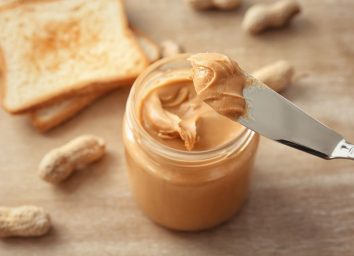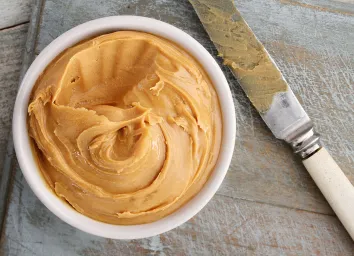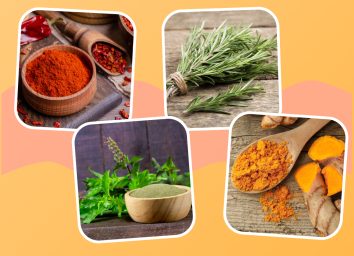Side Effects of Eating Too Much Peanut Butter, Say Dietitians
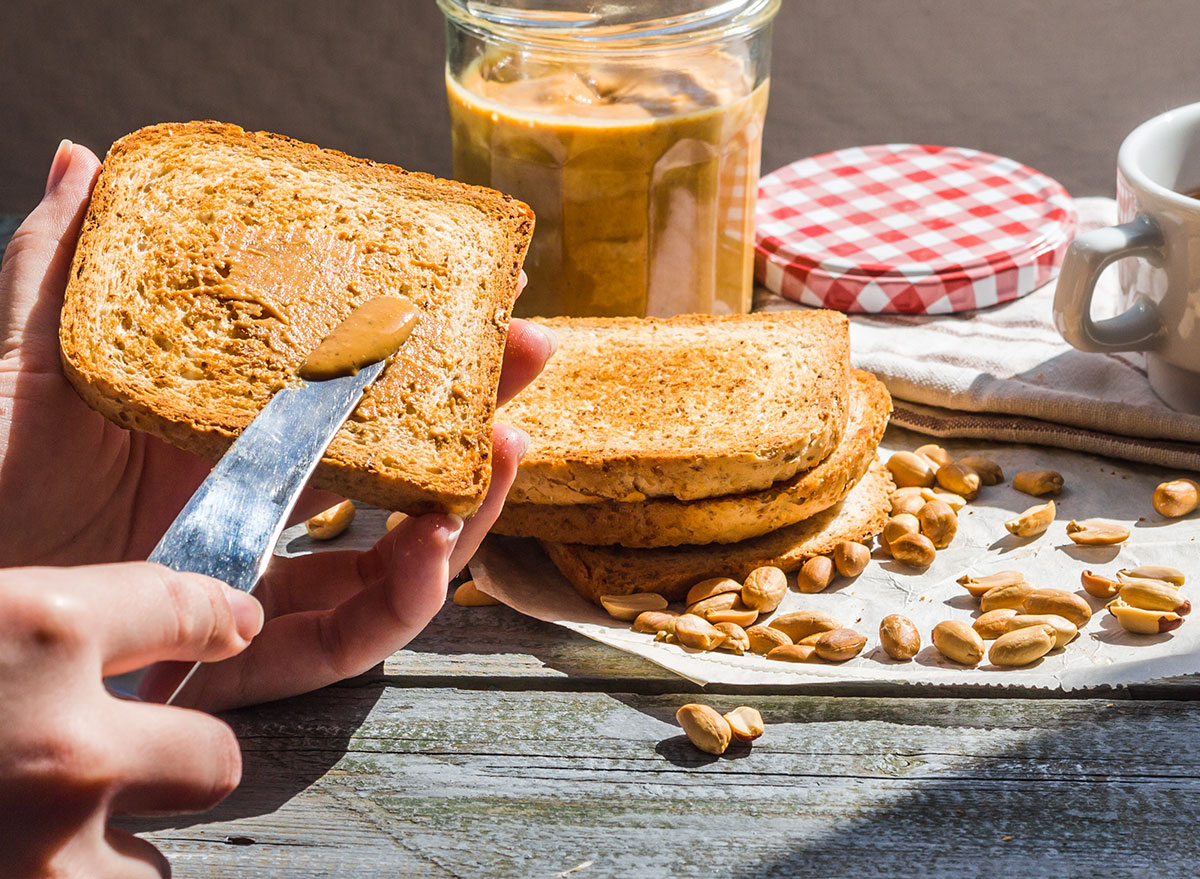
As creamy indulgences go, you could do a lot worse than peanut butter. For all its velvety thickness and high-calorie density, the nutty spread is surprisingly nutritious. Full of good-for-you monounsaturated fats, plant-based protein, and nutrients like magnesium, folate, and vitamin E, peanut butter definitely deserves a place in a healthy diet. Still, it is possible to get too much of a good thing. You can easily overdo it and could be eating too much peanut butter at once.
ince one serving of peanut butter is just 2 tablespoons, it's easy to get carried away when slathering the spread on crackers or assembling a mile-high PBJ. Here are five potential side effects of eating too much peanut butter, and for more healthy eating tips, be sure to read up on our list of The 7 Healthiest Foods to Eat Right Now.
You might get a stomach ache.
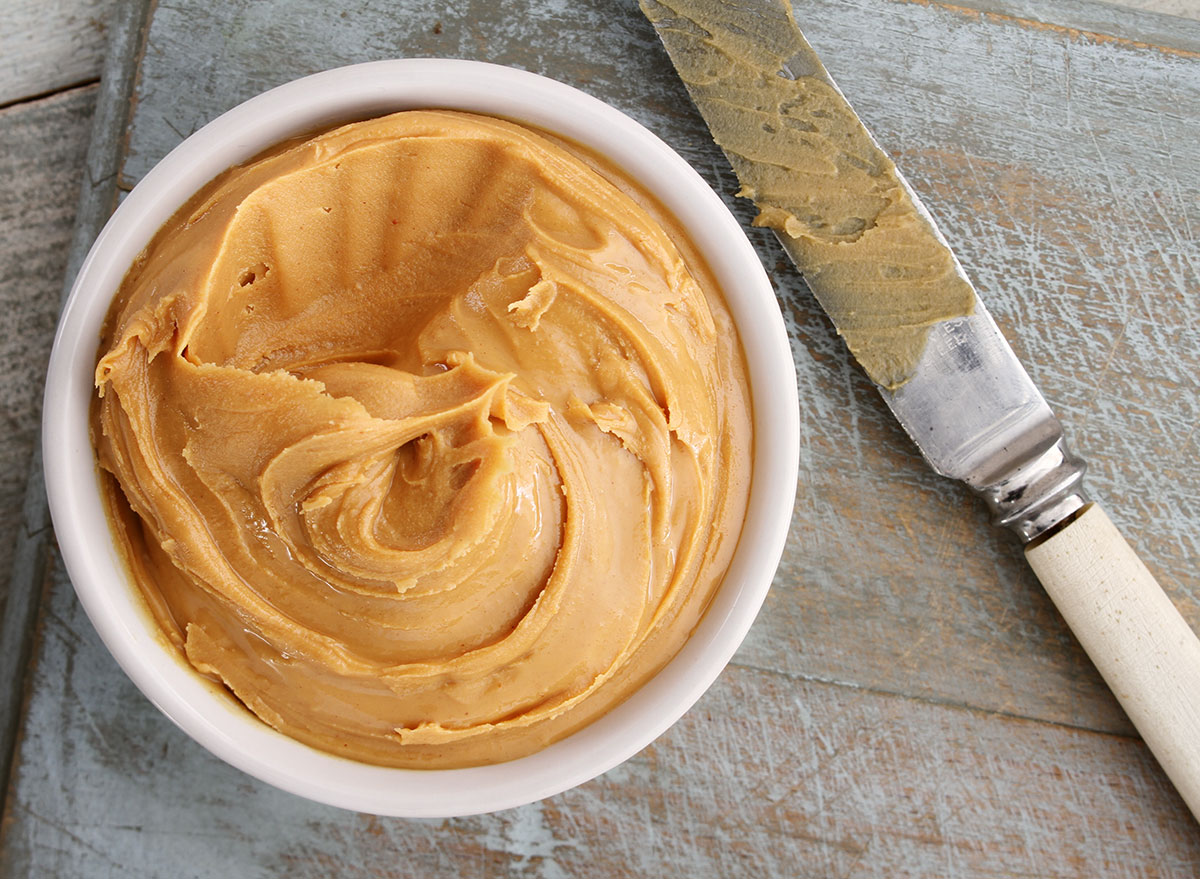
"Eating too much of anything can give you a stomach ache!" says Gillean Barkyoumb, MS, RDN. Because of its high-fat content, peanut butter can be especially difficult to digest for some people, leading to indigestion or bloating.
Meanwhile, there's another health issue that can predispose you to post-PB belly pain.
"You may experience a stomach ache if you have a food sensitivity to salicylates and amines," says Barkyoumb. "These are natural food chemicals and are in foods many of us eat on a regular basis, but if you overconsume peanut butter daily and have this sensitivity, it could lead to discomfort."
If peanut butter consistently gives you tummy troubles, talk to your doctor or dietitian about the possibility of a food sensitivity.
Here are 24 Ways to Get Rid of Bloating in Less Than 24 Hours.
You could get constipated.

With its thick, intractable texture, it's not hard to picture peanut butter gunking up your insides and causing constipation—but typically, even high doses of the stuff won't hinder your digestion. In fact, with up to 6 grams of fiber per serving, PB can actually keep things moving in your GI tract.
That said, there's one caveat to the peanut butter digestion equation.
"As with any fiber-filled food, if you do not consume adequate water then it can actually have the opposite effect and lead to constipation," says Barkyoumb. Be sure to wash peanut buttery foods down with plenty of fluid.
Get even more healthy tips straight to your inbox by signing up for our newsletter!
It might mess with your blood sugar.
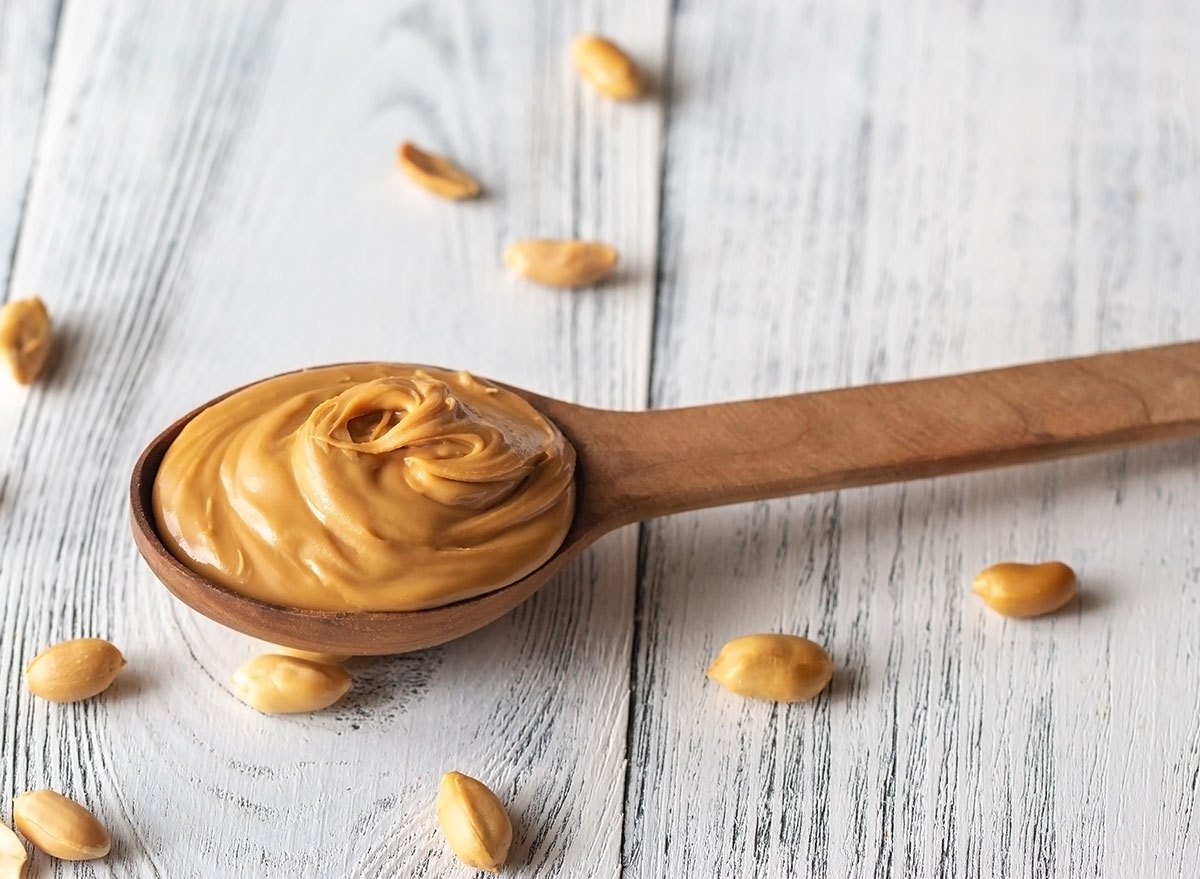
Many commercially sold jars of peanut butter have a wonderfully simple, wholesome ingredient list—but not all. Some brands load their formulas with added sugars. If you've whipped up a PBJ with high-sugar peanut butter, it may throw your blood sugar for a loop (especially alongside jelly!). Consuming too much sugar in one sitting can lead to the dreaded spike-and-drop of blood glucose that leaves you feeling shaky and fatigued.
Ward off sugar crashes by choosing a no-sugar-added product.
"A simple way to find a high-quality peanut butter is to flip the jar around and check the ingredients label," says dietitian Caroline Thomason, RD, CDCES. "Simple is best here, and if you can find a jar with the only ingredients listed being 'peanuts and salt,' then you have yourself a high-quality nut butter."
Not sure which peanut butter to buy? Check out our list of the top 20 peanut butters!
You might gain weight.
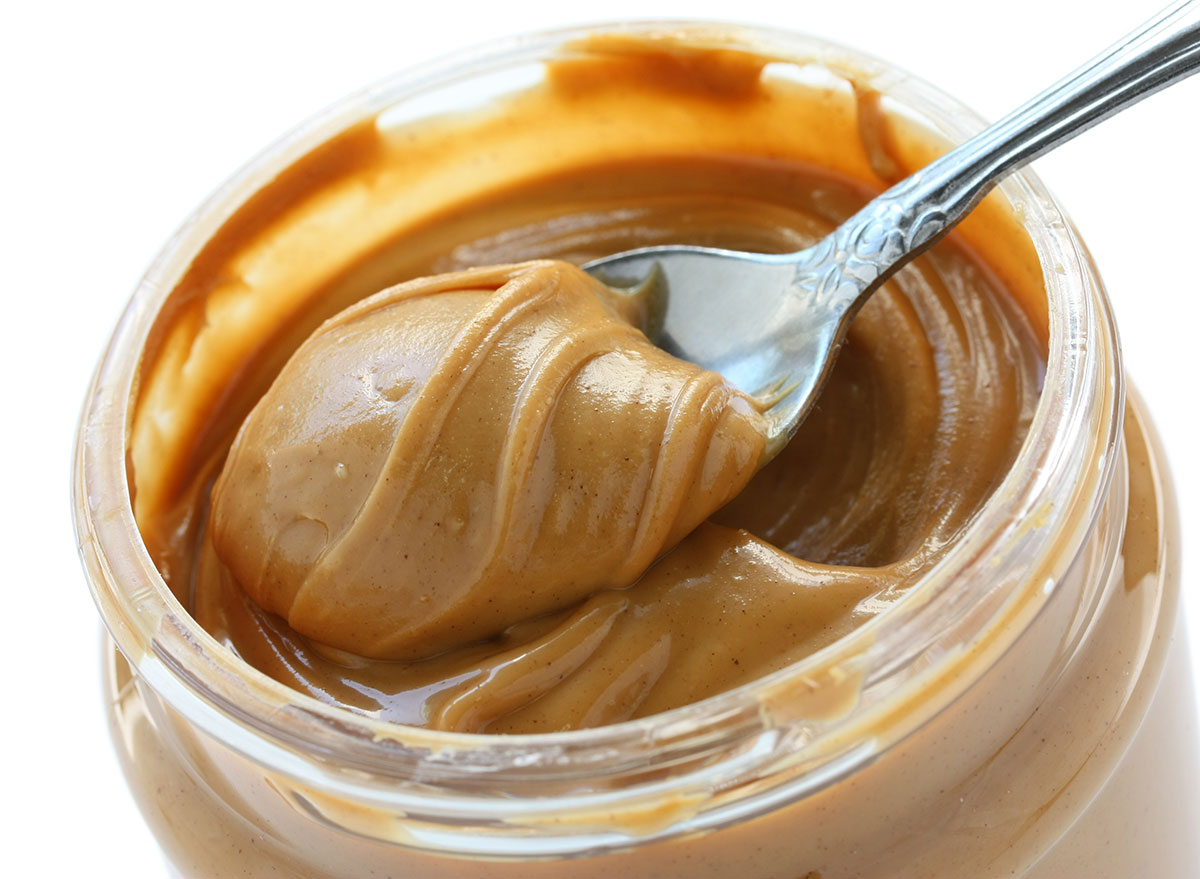
Peanut butter may have many beneficial qualities, but a low-calorie food it is not. In a 2 tablespoon-serving, you'll take in 190 calories, which can add up fast if you're not mindful. Over time, eating too much peanut butter could cause weight gain. (In fact, dietitians often recommend meals and snacks with peanut butter to clients who need to put on weight.)
"Even healthy foods, when overconsumed, will contribute to your waistline," confirms Thomason.
But there's good news, too: "One saving grace here is that peanut butter is high in healthy fat, which means it is super satisfying and can be much easier to portion control!" If you're watching your calories, try portioning with a tablespoon to see how much you're actually swirling into your oatmeal or smoothies. And don't miss these 30 healthy peanut butter recipes!
You might break out.
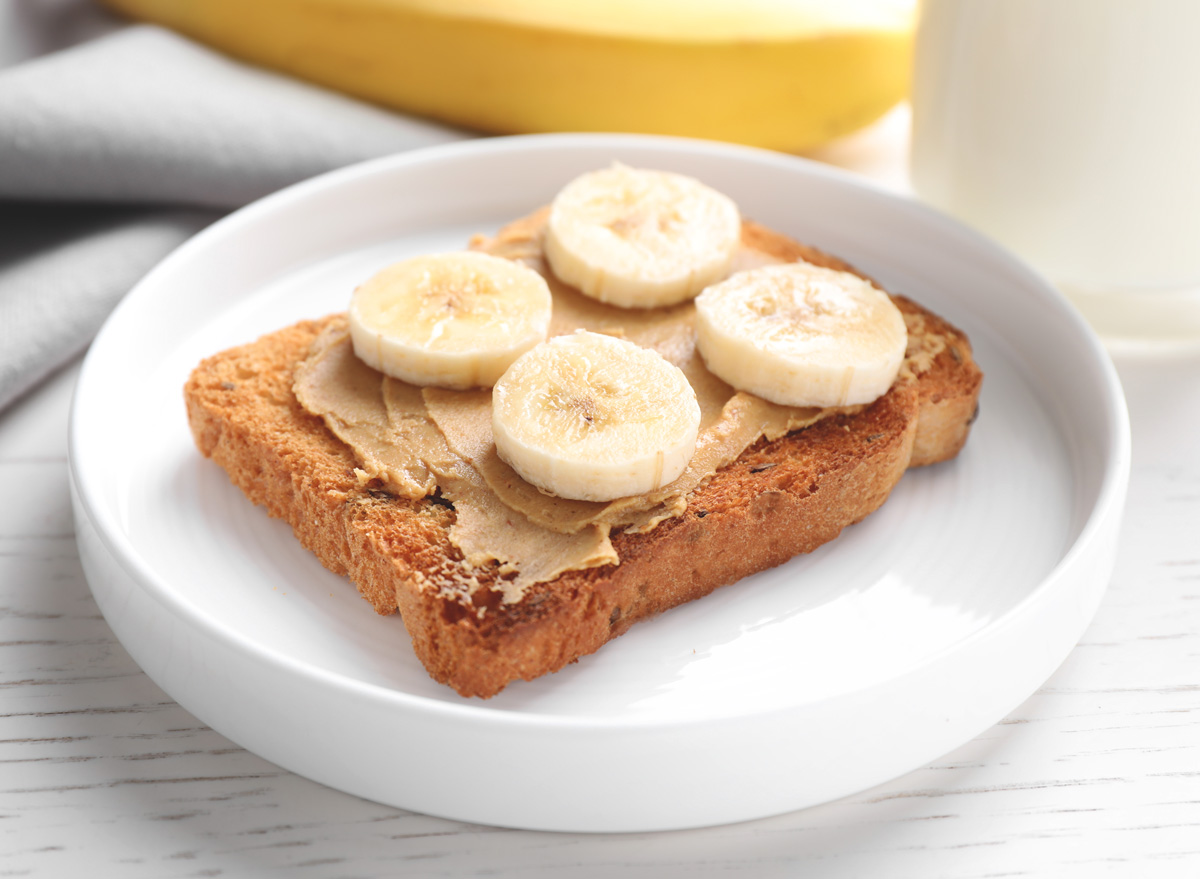
The evidence for a definitive link between peanut butter and acne is limited, but a combination of high-fat and high-sugar foods has been associated with breaking out. According to a 2020 study reported by Harvard Health, people who struggled with acne were 54% more likely to consume a high-fat, high-sugar diet.
For a small group of people, a sensitivity to peanuts could also spell skin problems.
"Some people are sensitive to peanut butter because peanuts are part of the legume family (think: beans, lentils, and peanuts) and these foods contain a plant compound called lectin that might contribute to overall inflammation," says Thomason.
Not sure if peanut butter is the culprit behind your breakouts? Thomason recommends a brief break from the creamy spread.
"Peanut butter may contribute to acne, but the only way to know for sure is to experiment with cutting it out for a few weeks," she says.
Be sure to steer clear of The #1 Worst Peanut Butter to Eat, According to a Dietitian.
